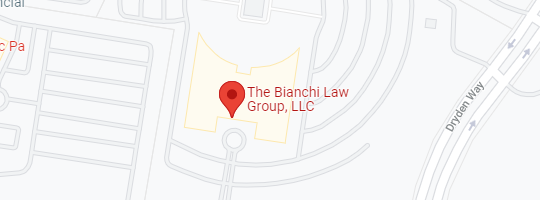In State v. Olenowski (Olenowski II), ___ N.J. ___ (2023),[1] the New Jersey Supreme Court addressed the admissibility of Drug Recognition Expert (DRE) testimony under the multi-factor test for determining the reliability of expert testimony established in the landmark case Daubert v. Merrell Dow Pharmaceuticals Inc. 509 U.S. 579 (1993), as adopted by our Court in State v. Olenowski (Olenowski I), 253 N.J. 133 (2023).
The defendant, Michael Olenowski , was convicted of drug-impaired driving based in part on DRE evidence. It is illegal in New Jersey to operate a motor vehicle “while under the influence of intoxicating liquor, narcotic, hallucinogenic, or habit producing drug.” N.J.S.A. 39:4-50. “However, unlike driver impairment caused by alcohol, which can be proven by a prohibited blood alcohol concentration (BAC) level established by statute, New Jersey statutes do not have comparable ‘per se’ standards for driving under the influence of drugs (DUID), or drugged driving.” State v. Olenowski (Olenowski II), ___ N.J. at ___ (slip op. at 4). To detect whether a driver is drug-impaired, New Jersey follows the protocol (adopted in all fifty states) known as the Drug Evaluation and Classification Program.
The protocol consists of twelve steps administered by specially trained officers known as Drug Recognition Experts (DREs). The twelve steps entail interviewing and observing the driver, checking vital signs, administering standardized field sobriety tests, and other information-gathering measures. At the end of the protocol, the DRE, guided by a standardized matrix, reaches an opinion about whether the driver is under the influence of drugs from one or more of seven categories and is thereby unable to operate a motor vehicle safely.
[State v. Olenowski (Olenowski II), ___ N.J. at ___ (slip op. at 5).]
The Appellate Division upheld the defendant’s convictions and the New Jersey Supreme Court granted certification. In Olenowski I, 253 N.J. at 153, 155, the Court adopted a “Daubert-type standard” for determining the reliability of expert evidence in criminal and quasi-criminal cases and remanded this matter to the Special Master to apply that standard to the twelve-step DRE protocol. The Special Master concluded that the DRE protocol met the reliability standard of N.J.R.E. 702 when analyzed under the Daubert standard. The Daubert criteria are used by courts to assess the admissibility and reliability of expert testimony, particularly in cases involving scientific evidence. The criteria provide a framework for judges to evaluate whether such evidence is based on scientifically valid reasoning and methodology. The key elements of the Daubert criteria include:
- Testability: This criterion requires that the scientific theory or technique can be empirically tested and potentially disproven if invalid.
- Peer Review and Publication: The theory or technique should have undergone review and publication in the scientific community, demonstrating its credibility.
- Known or Potential Error Rate: This involves assessing the accuracy and precision of the method, considering its known or potential errors and operational standards.
- General Acceptance in the Scientific Community: The technique or theory must be broadly accepted among experts in the relevant scientific field.
- Relevance and Fit: The evidence must be directly applicable to the case, aiding the fact-finder (e.g., jury) in understanding the evidence or determining a fact at issue.
The New Jersey Supreme Court in Olenowski II, vacated the defendant’s convictions and adopted the Special Master’s conclusions with significant modifications and limitations. State v. Olenowski (Olenowski II), ___ N.J. at ___ (slip op. at 6). First, the Court held that Daubert-based expert reliability determinations in criminal appeals would be reviewed de novo, while other expert admissibility issues would be reviewed under an abuse of discretion standard.
Second, the Court in Olenowski II determined that the extensive record substantiates that DRE testimony sufficiently satisfies the Daubert criteria to be admissible, with four specific limitations and safeguards: 1) DREs may only opine that their evaluation is “consistent with” drug usage, not that impairment was actually caused by drugs; 2) DRE testimony must be excluded if the State fails to make a reasonable attempt to obtain a toxicology report; 3) the defense must be given a fair opportunity to impeach the DRE; and 4) model jury instructions regarding DRE evidence should be considered. State v. Olenowski (Olenowski II), ___ N.J. at ___ (slip op. at 7).
Justice Pierre-Louis, joined by Chief Justice Rabner, filed a dissenting opinion in which she maintained that the majority had improperly altered the Daubert factors and had failed to focus on the soundness of methodology, reasoning, and accuracy as initially intended in Olenowski I. Justice Pierre-Louis argued that DRE evidence does not meet the standard of having a sufficient scientific basis to produce uniform and reasonably reliable results, and thus should not be admissible under N.J.R.E. 702.
At the Bianchi Law Group, we recognize the intricate nature of legal challenges, particularly those involving Drug Recognition Expert (DRE) testimony as highlighted in State v. Olenowski II. Our team of former prosecutors, with knowledge in criminal law and drug-impaired driving cases, is prepared to offer guidance. We can help you navigate the complexities of how recent court decisions, especially regarding DRE testimony, may impact your case. For dedicated assistance tailored to the nuances of these legal issues, contact us at 862-292-4501 for a consultation
[1] Available at https://www.njcourts.gov/system/files/court-opinions/2023/a_56_18.pdf
No aspect of this attorney advertisement has been approved by the Supreme Court of New Jersey









